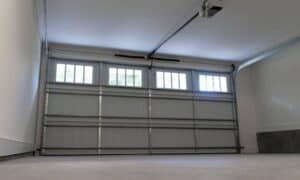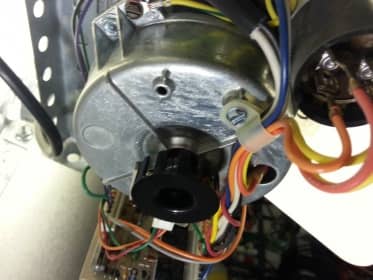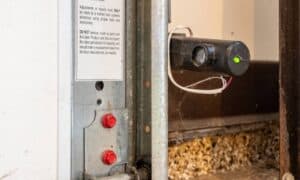Sometimes, your garage door may make a humming noise when closing or opening but fails to fully open or close. The humming noise is an indication that the door is failing to function well and requires immediate fixation or adjustments. The leading cause of garage door making noise include; faulty springs, faulty sensors, and faulty doors.
To avoid such issues, there are many recommendations one needs to follow carefully. For example, one requires to check the garage door frequently and solve any problem identified before worsening. Also, if the door is fault beyond fixation, one may consider replacing the door immediately with one that suits your garage perfectly. Moreover, one may seek help from a professional mechanic if the problem persists or they cannot fix the issue on their own.
Luckily, the article below describes a step-by-step guide on fixing the humming noise issue coming from the garage door. Also, it shows the leading causes of the garage door humming noise to keep the door functioning correctly and bring the door into correct functioning, especially when making opening or closing commands.
Table of Contents
Step-by-step guide on how to troubleshoot a garage door humming noise issue that does not move

The most recommended garage door is an automatic door opener that keeps you locked or unlocked inside or outside the garage. For the automatic door opener to last longer, it is advisable to give it appropriate maintenance by following the maintenance schedule frequently. Also, if the door opener shows some erratic behaviors, it is essential to troubleshoot them immediately before they worsen and damage the whole garage door.
Once the garage door fails to function, as usual, you remain locked and unable to access the garage to carry out your daily work. Such an issue may result from many causes that you can solve using the steps below carefully.
Step 1: collect all materials required
Before starting the process, it is essential to collect all the materials, such as a screwdriver. Ensure the tools are readily available in the toolbox.
Step 2: Locate the position of the door opener
You can find the door opener at the door, whether automatic or manual. Look carefully at the other parts of the door opener.
Step 3: Disconnect the door opener from the trolley
Disconnect the door from the door opener from the emergency cord carefully, especially if you fail to identify the leading cause of the humming noise. Manually open the door if possible. Look for a bent or loose track or a bent roller if it won’t move. You’ll have to fix or replace any damaged parts you find. Spraying lubrication on the door rollers may also be beneficial.
Step 4: inspect the condition of the door opener
Before proceeding to the troubleshooting process, it is essential to carefully check the door opener and its surrounding parts. Check all the components, including the door sensor, motor, among others. Ensure you inspect all components, including the wiring process.
Step 5: Check the condition of the motor and the chains
Listen to the motor and watch the chain move by pressing the remote or the wall-mounted start switch. If the motor hums but the chain does not move, the motor is malfunctioning. The chain sprocket may need to be serviced if the motor runs, but the chain does not move. The safety sensors may be out of alignment if nothing happens.

Also, lubricate your motor using the recommended greasing agent to keep the motor rotating freely without any metal-to-metal contact. When lubricating the engine, it is essential to follow the tips below to lubricate the door garage motor.
Step 6: Inspect the condition of the sensors
Examine the sensors. Both of them must have a constant glow, indicating that they are aligned and working correctly. Look for dirt, cobwebs, or leaves in front of the sensor lenses if one or both lights are off or flashing, then clean the lens as necessary using recommended tools such as a vacuum cleaner to suck all dirt, among others. If the lights continue to flash, adjust them manually until the light is stable. Such a process may entail using a screwdriver or tool to tighten one or both vertical door tracks.

If the sponsors are damaged beyond any fixation, first contact the original manufacturer of skilled personnel and seek help on the best garage door that suits your garage. Such a process prevents you from purchasing a wrong garage door opener that does not fit your garage door and may malfunction other door parts engaged.
Step 7: Test the garage door after troubleshooting all the issues
After repairing the sensors, try the door again. There could be an electrical disconnection inside the motor casing or in the house circuitry if nothing happens when you hit the start switch. Look for any loose wires inside the motor. Unplug the door opener before tightening it if you locate one. If you can’t detect any faults inside the engine, use a voltage tester to check the circuit wire for connection difficulties.
Step 8: Seek help from a professional if the humming noise issue persists
If the opener hums but the chain does not spin, consult an expert. A defective capacitor could be the cause of this. A test will determine whether it has to be changed. However, the process requires discharging the capacitor, which can be hazardous. If the motor is operational, but the chain is stuck, you should seek professional assistance. The engine may need to be disassembled for repair.
Frequently asked questions
How can I know if my garage door opener requires replacement?
The garage door opener may fail to function and generate a humming noise, mainly if it exists for a long time. To know when to replace the garage door opener, it is essential to consider the following signs.
1. Vibrating
An opener that tends to vibrate might seem harmless initially, but keep an eye on it. Vibrations may occur inside the housings of older motors with worn armatures or bent shafts.
You may even notice the opener swaying from its mounting points on your structure. Keep an eye out if this occurs. A vibrating opener could come loose from its attachment and fall to the ground (or onto your car). When critical mechanical components fail, it’s time to replace the opener.
2. Reversing after opening
If your garage door opens and then reverses, the security sensors at the bottom of the garage door frame may be malfunctioning. Consult your garage door opener’s manual to ensure that the sensors are correctly positioned.
If it doesn’t work, brush the floor across the garage door threshold to remove any debris that could be tripping the system. Cleaning the photo eye of each sense with a paper towel or soft cloth is also a good idea.
3. Opening that is intermittent or unresponsive
A few things could be wrong if your garage door does not open when you press the wall-mounted or remote control buttons. Always double-check that the batteries in your remote control are fresh and functional.
An unresponsive opener could indicate a problem with the opener’s logic board or wiring if that isn’t the case. While mending these with a little more work and spare parts, it’s generally quicker and more reliable just to get a new machine.
4. New sounds
By their very nature, traditional chain drive openers are noisy. Their bicycle-like chain was not designed to make noise reasonable, and the older it gets, the more your home will be disturbed. For a quieter operation, consider purchasing a modern belt drive opener.
If you have a newer opener that has become noticeably noisier, you should be concerned. Have a technician look it over to see what’s causing the noise. Keep in mind that most electric motors become louder as they age, signaling that it’s time to replace them.
Conclusion
If you experience humming noise from the garage door opener, follow the steps above to troubleshoot them effectively. First, identify the leading cause and try troubleshooting each cause differently.
Finally, when fixing the door opener, follow the essential precautions to avoid mishandling the door parts. Also, check the condition of the garage door opener frequently and solve all the problems instantly before they worsen.
